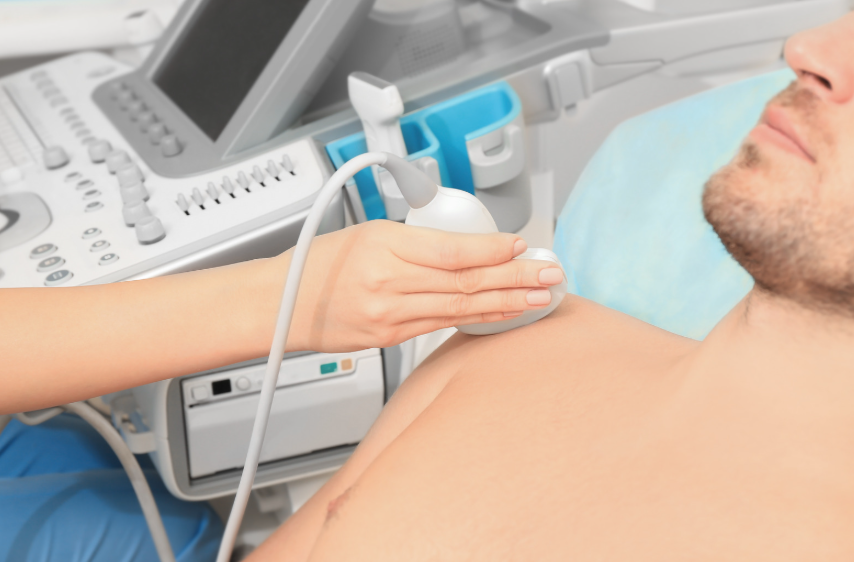Musculoskeletal Ultrasound Imaging has emerged as a valuable diagnostic tool, offering a non-invasive and effective alternative to traditional imaging methods such as X-rays, MRIs, and CT scans. As healthcare continues to evolve, the focus has shifted toward techniques that provide accurate results with minimal risk and cost. This blog will compare Musculoskeletal Ultrasound Imaging with traditional imaging methods, highlighting its advantages, applications, and limitations. Understanding the differences can help patients and healthcare providers make informed decisions regarding musculoskeletal health.
Understanding Musculoskeletal Ultrasound Imaging
Musculoskeletal Ultrasound Imaging is a cutting-edge diagnostic technique that uses high-frequency sound waves to create detailed images of muscles, tendons, ligaments, and joints. Unlike traditional imaging methods that use radiation, Musculoskeletal Ultrasound Imaging is safe, non-invasive, and radiation-free. This method is widely used to assess soft tissue injuries, such as tendon tears, strains, and inflammation, making it an essential tool for diagnosing musculoskeletal conditions. One of its key benefits is its ability to provide real-time imaging, allowing physicians to observe dynamic movement and make immediate assessments.
Traditional Imaging Methods: An Overview
Traditional imaging methods, including X-rays, MRIs, and CT scans, have long been the gold standards in medical diagnostics. X-rays are excellent for visualising bone fractures but fall short when it comes to soft tissue evaluation. MRIs offer detailed images of soft tissues and are ideal for identifying conditions like ligament tears and joint inflammation. However, they are costly, time-consuming, and not always accessible. CT scans provide high-resolution cross-sectional images, especially for complex fractures, but involve radiation exposure, which can be a concern with repeated use. Each of these methods plays a vital role in musculoskeletal health, but Musculoskeletal Ultrasound Imaging offers an alternative with fewer drawbacks.
Key Differences Between Musculoskeletal Ultrasound Imaging and Traditional Methods
The primary difference between Musculoskeletal Ultrasound Imaging and traditional imaging methods lies in their imaging capabilities and safety profiles. Unlike X-rays and CT scans, Musculoskeletal Ultrasound Imaging does not involve radiation, making it a safer option, particularly for frequent monitoring. While X-rays excel at visualising bones, Musculoskeletal Ultrasound Imaging provides superior images of soft tissues, such as tendons, muscles, and ligaments. Another significant advantage is the real-time nature of Musculoskeletal Ultrasound Imaging, which allows healthcare providers to observe movement and make immediate clinical decisions. Additionally, Musculoskeletal Ultrasound Imaging is often more cost-effective and portable compared to MRIs and CT scans, making it more accessible in various healthcare settings.
Advantages of Musculoskeletal Ultrasound Imaging
Musculoskeletal Ultrasound Imaging offers several notable advantages over traditional imaging methods. First and foremost, it is a non-invasive technique with no radiation exposure, making it ideal for patients who require frequent monitoring, such as those with chronic musculoskeletal conditions. The ability to provide real-time imaging is a major benefit, especially for guiding procedures such as injections or aspirating fluid from joints. Moreover, Musculoskeletal Ultrasound Imaging is highly portable and can be performed at the point of care, whether in a clinic, hospital, or even at the bedside. It is also more cost-effective compared to MRIs and CT scans, offering significant savings to both healthcare providers and patients.
Limitations of Musculoskeletal Ultrasound Imaging
Despite its many advantages, Musculoskeletal Ultrasound Imaging has its limitations. The primary challenge lies in its reliance on the skill of the operator. Accurate diagnosis depends on the expertise of the technician or radiologist conducting the ultrasound. Additionally, Musculoskeletal Ultrasound Imaging may not be as effective in visualising deep structures, such as bones, compared to CT or MRI scans. For patients with obesity or thick body tissue, the quality of the images may be compromised. Nevertheless, when used appropriately, Musculoskeletal Ultrasound Imaging can provide invaluable insights into soft tissue injuries and conditions.
When to Choose Musculoskeletal Ultrasound Imaging Over Traditional Imaging
Musculoskeletal Ultrasound Imaging is particularly beneficial for diagnosing soft tissue injuries like tendonitis, muscle strains, and ligament sprains. It is also invaluable for monitoring disease progression, such as in cases of arthritis, or for assessing the effectiveness of treatments. When procedures such as guided injections or fluid aspirations are required, Musculoskeletal Ultrasound Imaging can provide real-time feedback, ensuring precision and improving patient outcomes. On the other hand, traditional imaging methods like MRI or CT scans may be more appropriate for detecting bone fractures, complex joint issues, or deep tissue conditions that cannot be effectively evaluated with ultrasound.
Advancements in Musculoskeletal Ultrasound Imaging Technology
The field of Musculoskeletal Ultrasound Imaging has seen significant advancements in recent years. Modern ultrasound devices offer higher resolution images, allowing for more accurate assessments of soft tissue injuries and conditions. In addition, innovations like 3D and 4D ultrasound have further improved diagnostic capabilities. Artificial intelligence (AI) is also being integrated into Musculoskeletal Ultrasound Imaging, enhancing accuracy, reducing operator dependency, and enabling quicker diagnoses. These technological advancements make Musculoskeletal Ultrasound Imaging an even more powerful tool in the diagnosis and management of musculoskeletal disorders.
Takeaway
Musculoskeletal Ultrasound Imaging has proven to be an excellent non-invasive alternative to traditional imaging methods, offering numerous advantages such as no radiation exposure, real-time imaging, and cost-effectiveness. While traditional methods like X-rays, MRIs, and CT scans are still essential for diagnosing certain musculoskeletal conditions, Musculoskeletal Ultrasound Imaging has carved out its place as a reliable and versatile diagnostic tool. As technology continues to evolve, the role of Musculoskeletal Ultrasound Imaging in healthcare will only expand, providing patients and healthcare providers with a safer, faster, and more accessible way to manage musculoskeletal health.
FAQs
- What is Musculoskeletal Ultrasound Imaging used for?
Musculoskeletal Ultrasound Imaging is used to diagnose soft tissue injuries, such as tendon and ligament tears, muscle strains, and joint inflammation. - How does Musculoskeletal Ultrasound Imaging compare to an MRI?
While MRIs provide detailed images of soft tissues, Musculoskeletal Ultrasound Imaging offers real-time imaging with no radiation exposure, making it a quicker and more cost-effective option for many musculoskeletal conditions. - Is Musculoskeletal Ultrasound Imaging safe for repeated use?
Yes, Musculoskeletal Ultrasound Imaging is completely safe for repeated use, as it does not involve any radiation. - Can Musculoskeletal Ultrasound Imaging replace X-rays for fractures?
No, Musculoskeletal Ultrasound Imaging is primarily used for soft tissue evaluation and cannot replace X-rays when diagnosing bone fractures.






